Camping in the forest
- Emma Hankinson
- May 7, 2016
- 2 min read
First Camping Trip to the Hills
On the 11th April, Emma and Chris, alongside local guides Supri, Ucok and Nandas set off on a 5-day excursion to conduct the second vocal array in the hill forest 2km North-west of base.
At each sampling site 4 consecutive mornings of vocal recordings are conducted simultaneously at 3 locations (each 500m apart), five random vegetational plots are sampled and data loggers are placed in trees within these plots to sample the light and temperature levels within trees.
Our camp was made close to the central vocal array, this allowed less time walking to each array point in the dark the following morning. We also had to ensure camp was next to a water source for drinking and cooking (and sometimes washing).
Our first job was to put up data loggers. Chris created a catapult (right) that fires a shot to the highest point within a tree. TreeKit.com, a local UK company specialising in arborist equipment and training, was consulted to develop this Big Shot Catapult set-up.
A rope is then attached to the end of the shot line, and three data loggers are attached, 10m apart. The highest logger is placed at the top of the tree, second logger in the mid canopy and the third logger near ground. This provides data on the variation in temperature and light intensity within trees in our sampling areas, which may affect primate ranging behaviours.
Vocal Arrays
Each individual at each array post had an MP3 player with a shot gun microphone to record each primate group's vocalisations. As well as recording the location of each individual group heard, studies have shown each group has an individual call, differing from neighbouring groups. By recording individual long calls we hope to be able to identify each group in relation to its call.
All recordings were downloaded and analysed using PRAT linguistic analysis software.
Butterflies
In addition to primate surveys, we constructed butterfly nets to gain information on fruit feeding butterfly diversity in different forest patches. Each trap was placed at different canopy heights and baited with fermented banana (shown to be the bait with the highest success rate). Each species caught was photographed upper and lower sides for identification. Butterflies are thought to be an indicator species for disturbance levels so hopefully, this method will provide further information on diversity in relation to forest structure and temperature variation, shown through the micro-climate data logger analysis.

Sheltering from a thunderstorm under native vegetation.




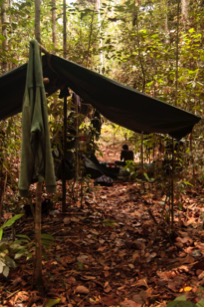
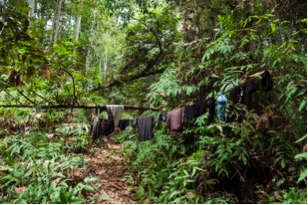

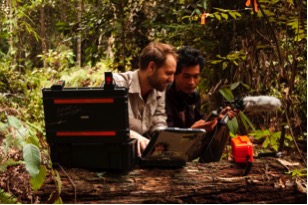
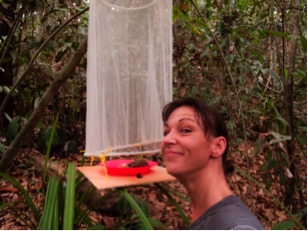
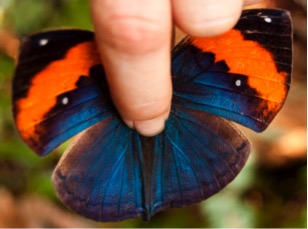
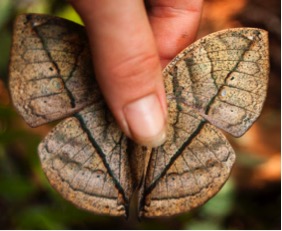





























Comments